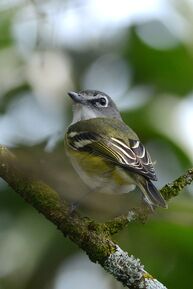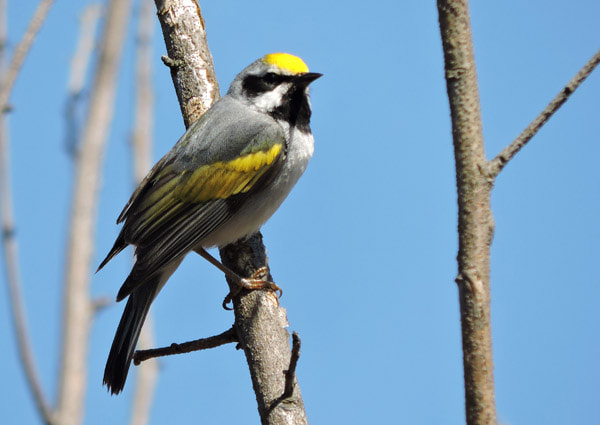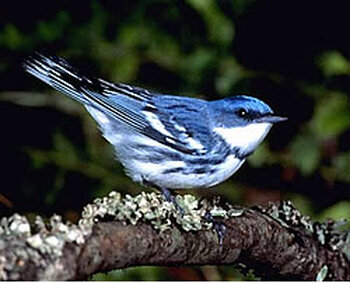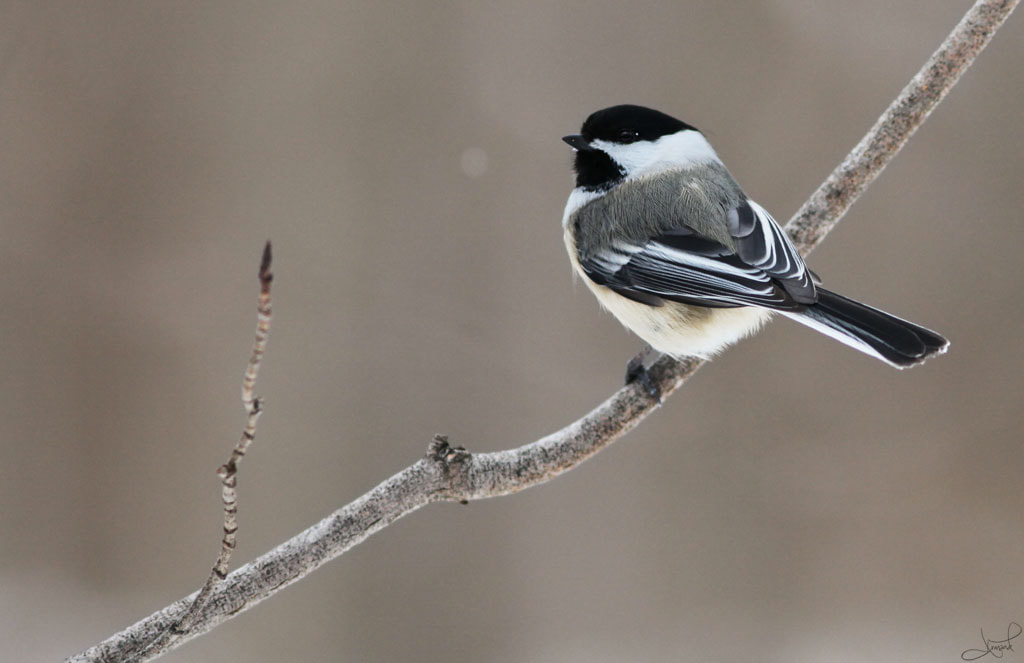Road Trip to Western Maryland
|
Garrett County is Maryland's only county that lies mostly within the Appalachian Plateau. It is very different than the the Coastal Plain region of Maryland that Anne Arundel County, southern Maryland, and the Eastern Shore are part of.
There are several species of birds that we saw migrating north through here in May, but do not build nests and raise young birds in the coastal plain. Many of those birds end up in Canada, New England, or states around the Great Lakes for raising their young, before migrating south in the fall. However, some of those species also find the mountains and plateaus of western Maryland to be good habitat and weather conditions for nesting. So I went out for a day (left 3:30 AM-returned 7 PM) to see what I could see or hear. I ended up finding 71 species. I heard and saw several pairs of Blue-headed Vireos. I usually get a few in April or early May in our area; it was nice to see and hear them on their breeding grounds. Same with the Chestnut-sided Warbler, Veery, Alder Flycatcher, Yellow-bellied Sapsucker, and other warbler species. I was also excited to hear two Golden-winged Warblers. I have only seen a few in my life, and heard but not seen a few others. In Maryland, they are typically only reliably seen in western Maryland. I last saw one in Maryland in 1992. Their populations numbers have dropped significantly in recent decades. Another warbler more common in Garrett County than here is the beautiful Cerulean Warbler. I have heard and seen only a handful in my birding experiences, and it was another bird I wanted to get that day. Like the Golden-crowned Warbler, its population has dropped dramatically in the last several decades, especially as its needed habitat has been lost both in its wintering grounds of South America, as well as breeding areas in the United States, etc. I had one singing at the same place as a Golden-winged, and a Barred Owl calling there in the middle of the day as a bonus! I also heard and saw chickadees...., but not the species we have here, which is the Carolina Chickadee. Western Maryland habitats favor the very similar Black-capped Chickadee, which were the chickadee species I grew up seeing in New York state, and later in Massachusetts. Sightings from my trip: https://ebird.org/checklist/S70412707 https://ebird.org/checklist/S70404959 https://ebird.org/checklist/S70405431 https://ebird.org/checklist/S70406678 https://ebird.org/checklist/S70412883 https://ebird.org/checklist/S70403933 |
Above images from Wikimedia
|



